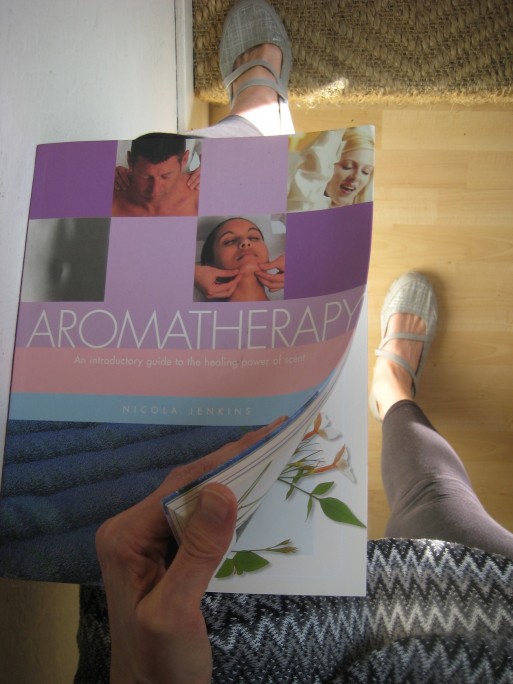 I’m a big fan of natural smells. Actually, I adore nature’s smells. I have incense, an essential oil ceramic burner, pure scented candles, sachets in my drawers, and I only use essential oil as my perfume. What is more compelling than aromatherapy, the healing power of scent?
I’m a big fan of natural smells. Actually, I adore nature’s smells. I have incense, an essential oil ceramic burner, pure scented candles, sachets in my drawers, and I only use essential oil as my perfume. What is more compelling than aromatherapy, the healing power of scent?
When Donna Karan’s late husband Stephan Weiss had lung cancer, he used aromatherapy to help him through his illness. Mentally dealing with the fact that you’re dying can cause any mix of depression, anxiety and panic attacks. Aromatherapy is one way to ease the mental and physical suffering from a terminal illness in the remaining days of one’s life. A beautiful way to explore the healing power of scent.
Aromatherapy is the art of promoting balance, harmony and health for the body, mind and spirit. In a SevenPonds interview, Marika Fleri, an aromatherapy specialist, explains the intent: “to unify physiological, psychological and spiritual processes to enhance an individual’s innate healing process.” Even though clinical trials are lacking to prove the medical benefits of aromatherapy, we are all familiar with the power of smell to transport our minds in time and space. Does it get any better than that?
As the book “Aromatherapy, An Introductory Guide to the Healing Power of Scent” by Nicola Jenkins explains, your nose nerve receptors pick up fragrant “messages” that are processed in the limbic system. Our limbic system is that special place where memories are stored. Different smells tap into all kinds of amazing memories, and memories can be beautiful places to travel to in moments of pain and anguish. Excerpts from the book suggest:
“FOR THE MIND: Bergamot is very uplifting. Use it for anxiety, depression, mood swings, insomnia, and nightmares.”
“FOR THE BODY: Bergamot can also be used to support the immune system — especially for conditions such as pharyngitis, urogenital infections, chronic fatigue, and the side effects of cancer treatment.”
This book gives a good beginner’s overview of aromatherapy’s history; the powers of aromatherapy; types of applications; and what essential herbs, flowers, plants, resins and fruits aid various conditions. A tidbit fact — I was a bit shocked to learn that it takes 10 thousand lemons just to make two teaspoons of essential oil!

Donna Karan’s husband Stephan Weiss used aromatherapy to help his anxieties when suffering lung cancer
Credit: lef.org
I learned quite a few things from this book. For instance, it was by accident that a French perfumer, René-Maurice Gattefossé, discovered the possibilities of essential oil, when, having burned his hand, he quickly dunked it into a vat of lavender oil. He had no resulting pain, swelling or blistering. His discovery would later be used to dress the wounds of Civil War soldiers. And today’s process of preparing a body for green burial is a call back to the ancient practice of washing the body with infused exotic herb floral waters. (This green burial water is available on our site.)
Aromatherapy is considered a holistic therapy, and today more and more hospitals are embracing it as an accepted adjunct to traditional care. This is a wonderful change since whatever can help those to move through grieving or a terminal illness is incredibly valuable. I should know — I use aromatherapy on a daily basis as part of simply getting through life.
This book is one I bought years ago and it still remains on my one and only selective floor- standing book shelf. It’s nice to know that beautiful smells can help carry us through to the end of our life too.

 ”Aromatherapy, An Introductory Guide to the Healing Power of Scent” by Nicola Jenkins
”Aromatherapy, An Introductory Guide to the Healing Power of Scent” by Nicola Jenkins


 John Mulaney’s “Funeral Planning” on Netflix: No Real Plan
John Mulaney’s “Funeral Planning” on Netflix: No Real Plan

 Composting Bodies Is Now Legal in a Dozen States
Composting Bodies Is Now Legal in a Dozen States














